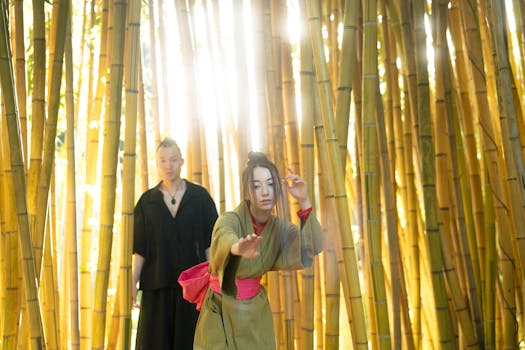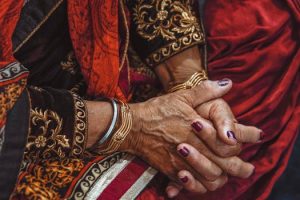From Kimono to Catwalk: Asian Influences in Western Fashion
The fusion of Asian influences in Western fashion has been a recurring trend for decades, with designers drawing inspiration from the rich history and culture of the East. From the elegant kimono to the bold prints of Chinese silk, Asian elements have been incorporated in various forms in the Western fashion scene, making a significant impact on the global fashion industry. This cultural exchange has not only created stunning and unique styles but has also broken down barriers and bridged the gap between two very different worlds. Let’s take a closer look at how Asian influences have transformed the Western fashion landscape from kimono to catwalk.
The Evolution of Asian-Inspired Fashion
The fascination with Asian fashion can be traced back to the early 20th century, when the West’s interest in the exotic and unknown was at its peak. Japanese silks, intricate embroidery, and embellishments from China, and the vibrant colors of India became popular in Western fashion, creating a cultural awakening. These styles were initially seen as a form of cultural appropriation, but as the decades passed, the fusion of East and West became a marker of craftsmanship and innovation.
In the 1970s, designers like Kenzo Takada and Yoji Yamamoto brought the Japanese aesthetic to the forefront of the fashion industry, with their avant-garde designs that featured bold colors, clean lines and asymmetrical cuts. This opened the doors for designers like Rei Kawakubo, Issey Miyake, and Junya Watanabe, who challenged traditional silhouettes and experimented with fabrics and techniques, creating avant-garde collections that influenced designers all over the world.
The Rise of the Kimono
The traditional Japanese garment, the kimono, made its way onto the catwalks of the West in the 1980s, becoming a popular fashion statement among women. Designers started incorporating the kimono’s unique silhouette into their collections, adding a touch of elegance and sophistication to their designs. The flowing, loose-fitting garment, often made of luxurious silk, became a symbol of style and grace, and it continues to be a staple in many fashion collections today.
However, the modern take on the kimono is not limited to its traditional form. Designers have reimagined the garment, incorporating Western influences and creating hybridized versions that are versatile and can be worn in many different ways, from casual everyday wear to red carpet events.
Chinese Elements on the Catwalk
China’s rich cultural heritage and influence on fashion can be seen in many Western collections, with its intricate embroidery, eye-catching prints, and ornate designs. Designers like Ralph Lauren and Christian Dior have incorporated traditional Chinese elements into their collections, creating a fusion of Eastern and Western styles. The iconic qipao dress, characterized by its form-fitting silhouette and high collar, has become a popular choice for red carpet events, with celebrities like Nicole Kidman and Rihanna sporting modern interpretations of the dress.
With China’s growing presence in the global fashion market, more and more designers are turning to the country for inspiration, creating a bridge between the East and West and opening up a whole new world of possibilities in the world of fashion.
The Influence of India
India’s vibrant and diverse culture has been a source of inspiration for designers around the world. The country’s rich history of textiles, intricate handiwork, and bold colors have influenced Western fashion, making their way onto runways and into mainstream fashion collections. Designers like Diane Von Furstenberg, Alexander McQueen, and Valentino have incorporated Indian influences in their designs, whether it be in intricate embroidery, vibrant colors, or the use of traditional fabrics like silk and cotton.
The use of Indian influences in Western fashion has not only created stunning designs but has also brought attention to the country’s talented artisans and designers, providing them with a platform to showcase their creations on a global scale.
The Impact of Asian-Inspired Fashion
The fusion of Asian influences in Western fashion has had a significant impact on the global fashion industry. It has not only created more diverse and unique styles but has also served as a form of cultural exchange, breaking down barriers and promoting global understanding and appreciation for different cultures.
Furthermore, the use of traditional Asian elements in Western fashion has also brought attention to issues such as cultural appropriation and the importance of giving credit to the source of inspiration. It has sparked discussions and raised awareness about the need for cultural sensitivity in the fashion industry, encouraging designers to be more conscious and respectful of the cultures they draw inspiration from.
In Conclusion
From kimono to catwalk, the fusion of Asian influences in Western fashion has been a source of innovation and inspiration in the fashion industry. It has created unique and versatile styles, breaking down cultural barriers and promoting global understanding and appreciation for different cultures. As the fashion industry continues to evolve, we can only expect to see more of this cultural exchange, bridging the gap between East and West and creating a more diverse and inclusive fashion landscape.










